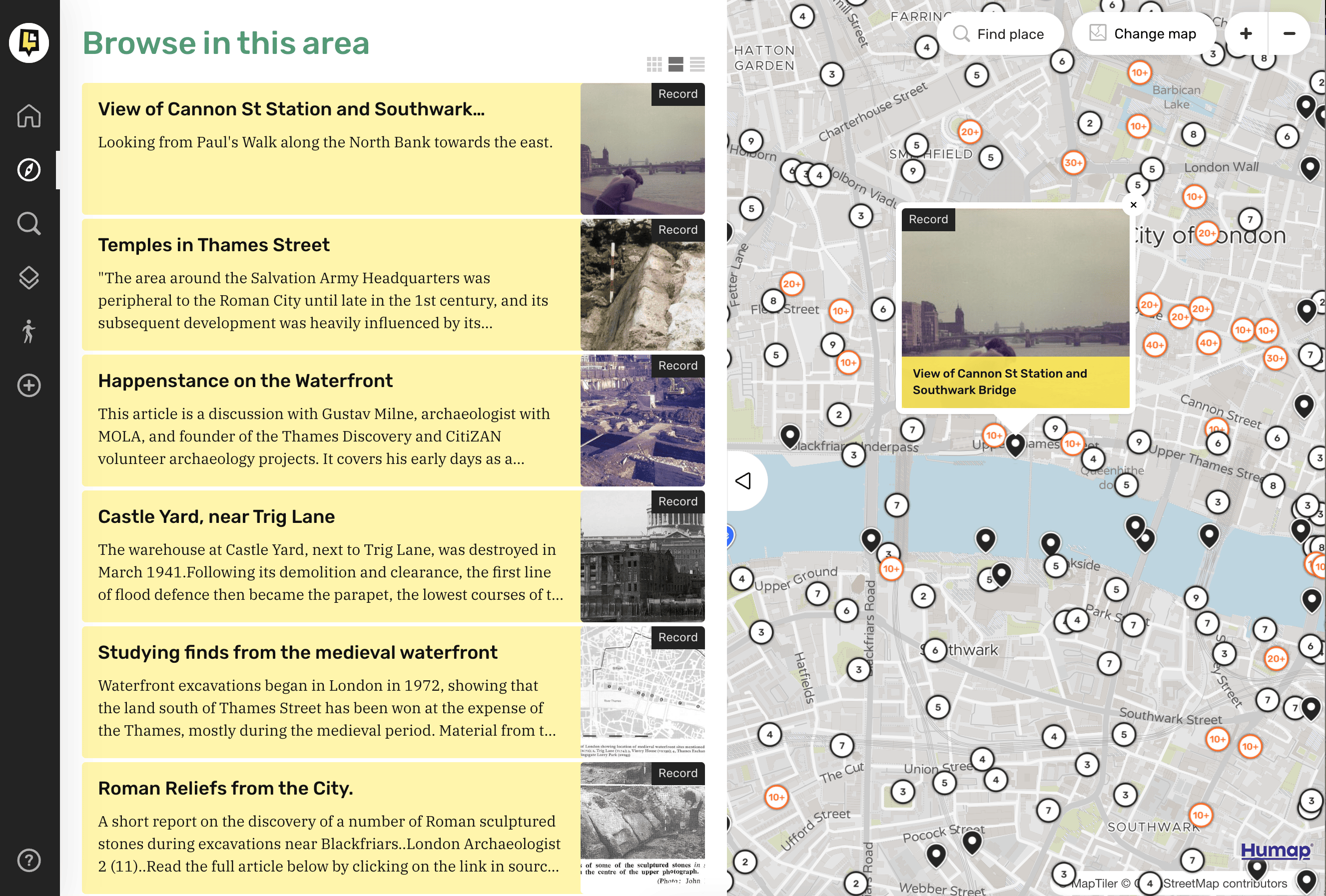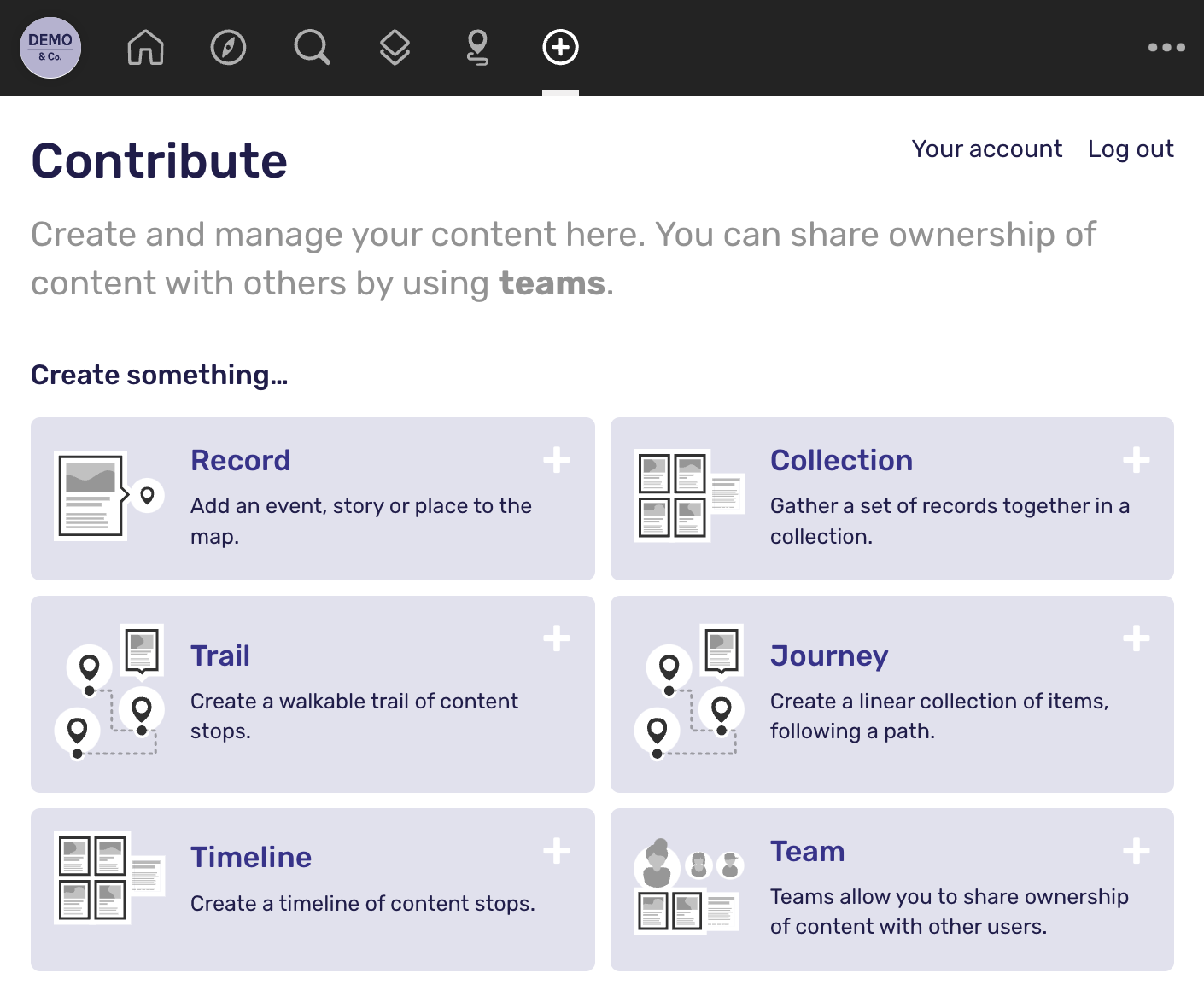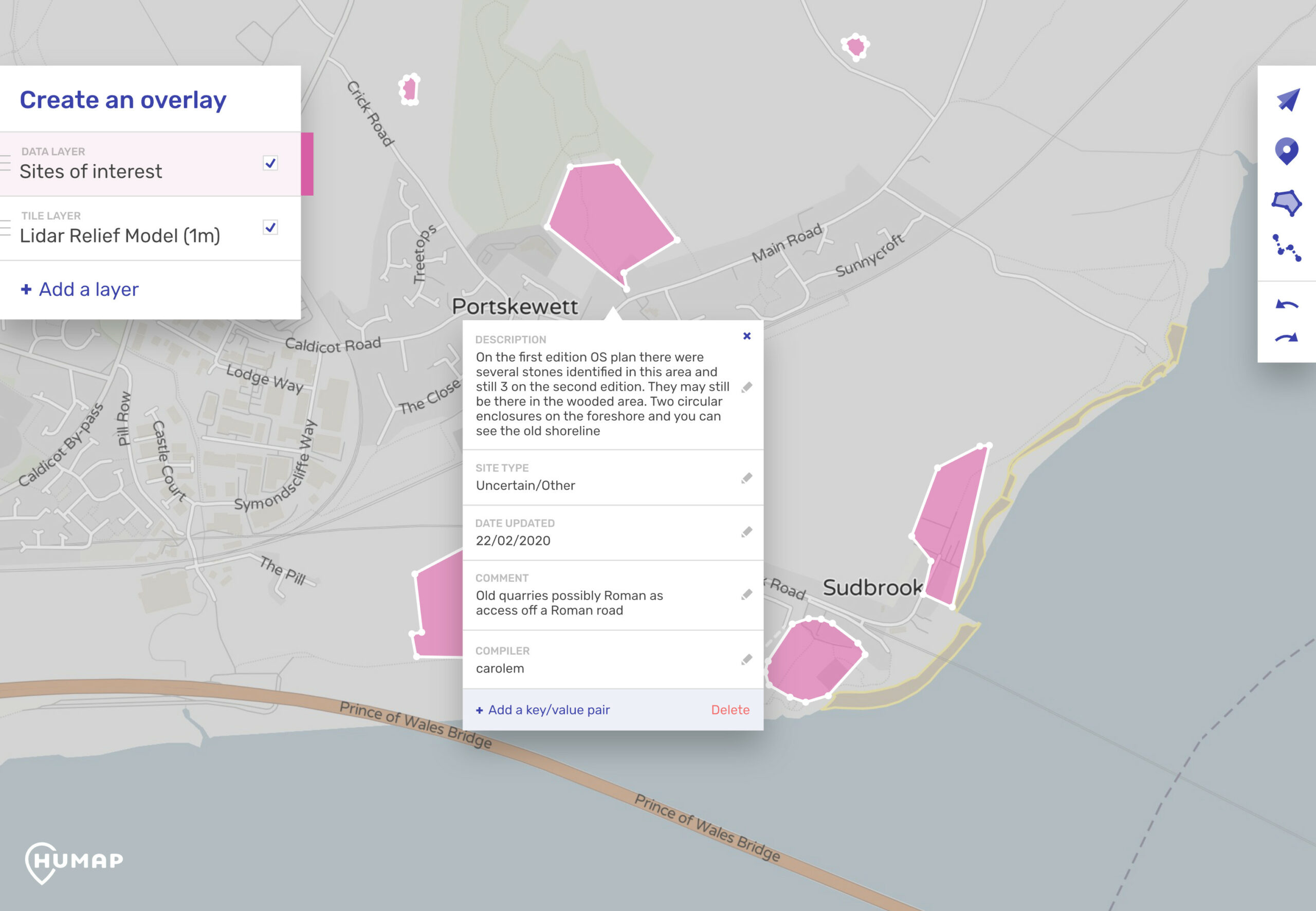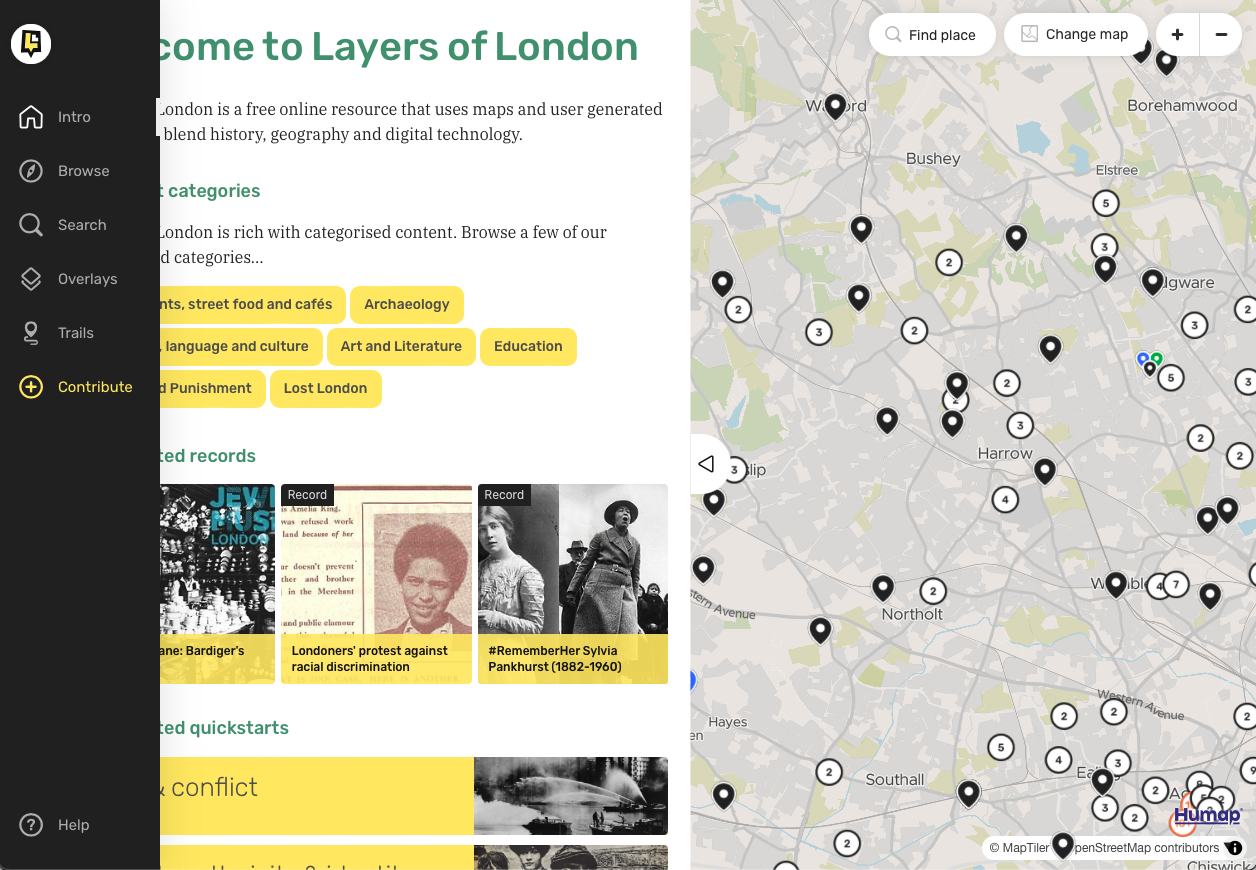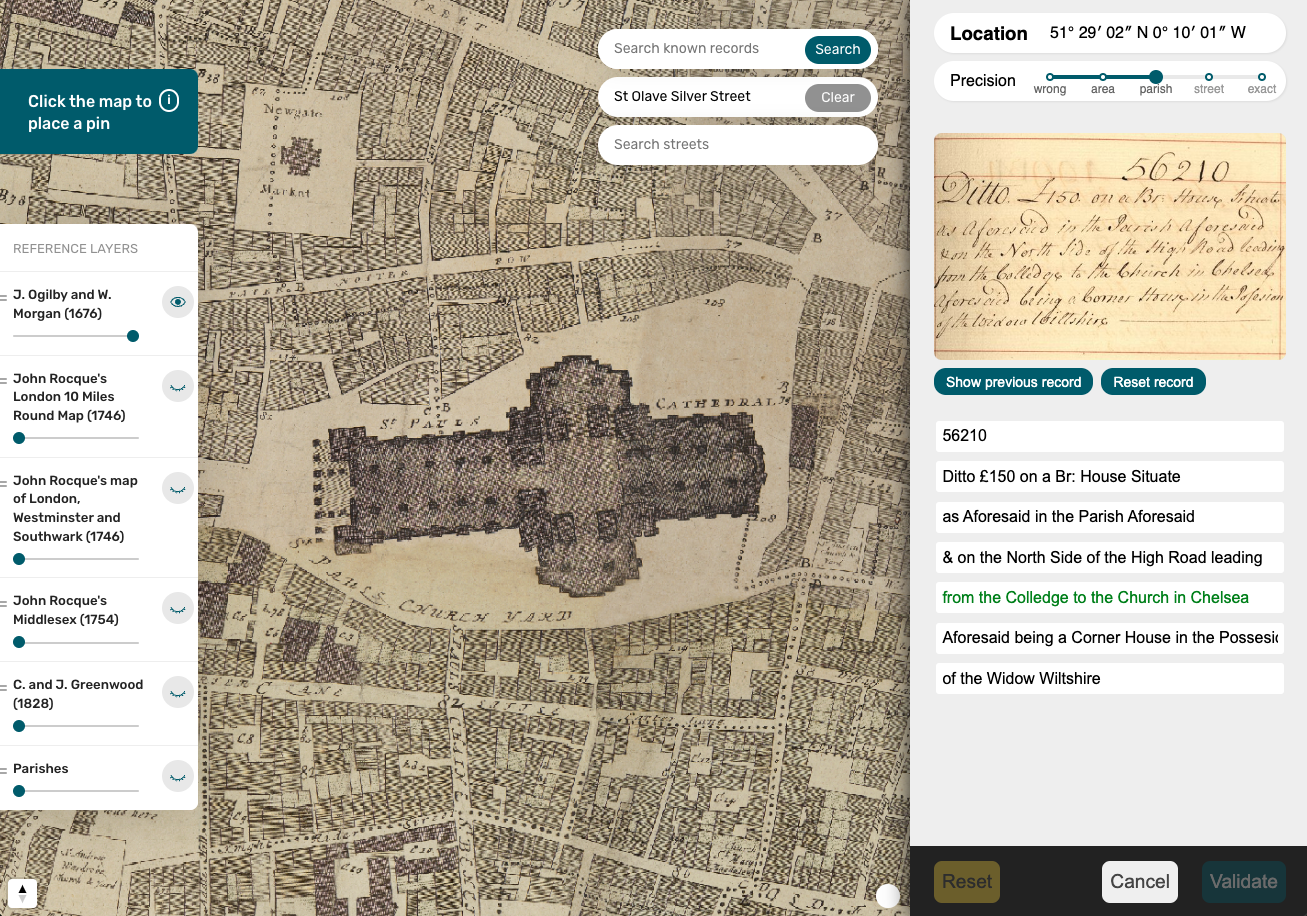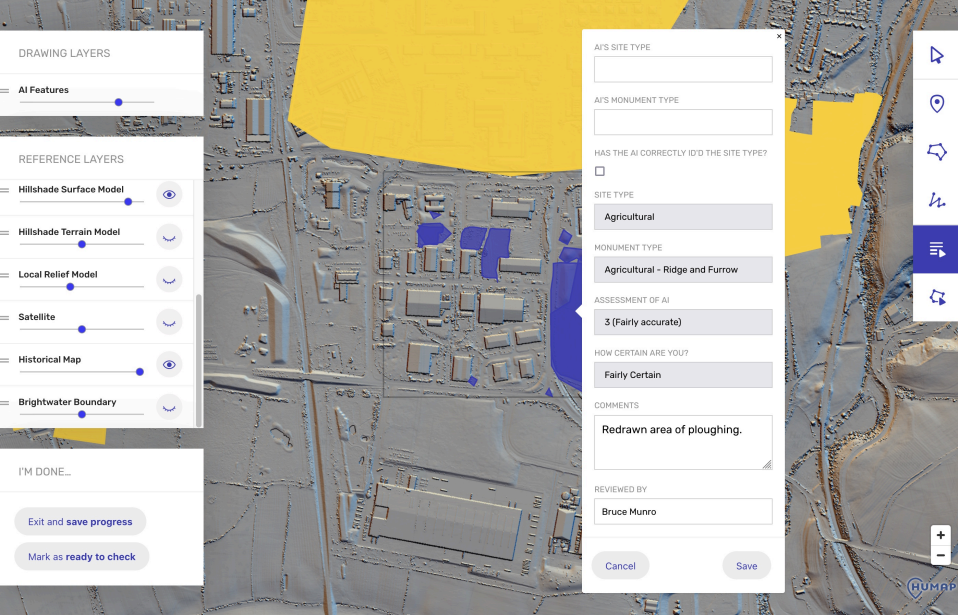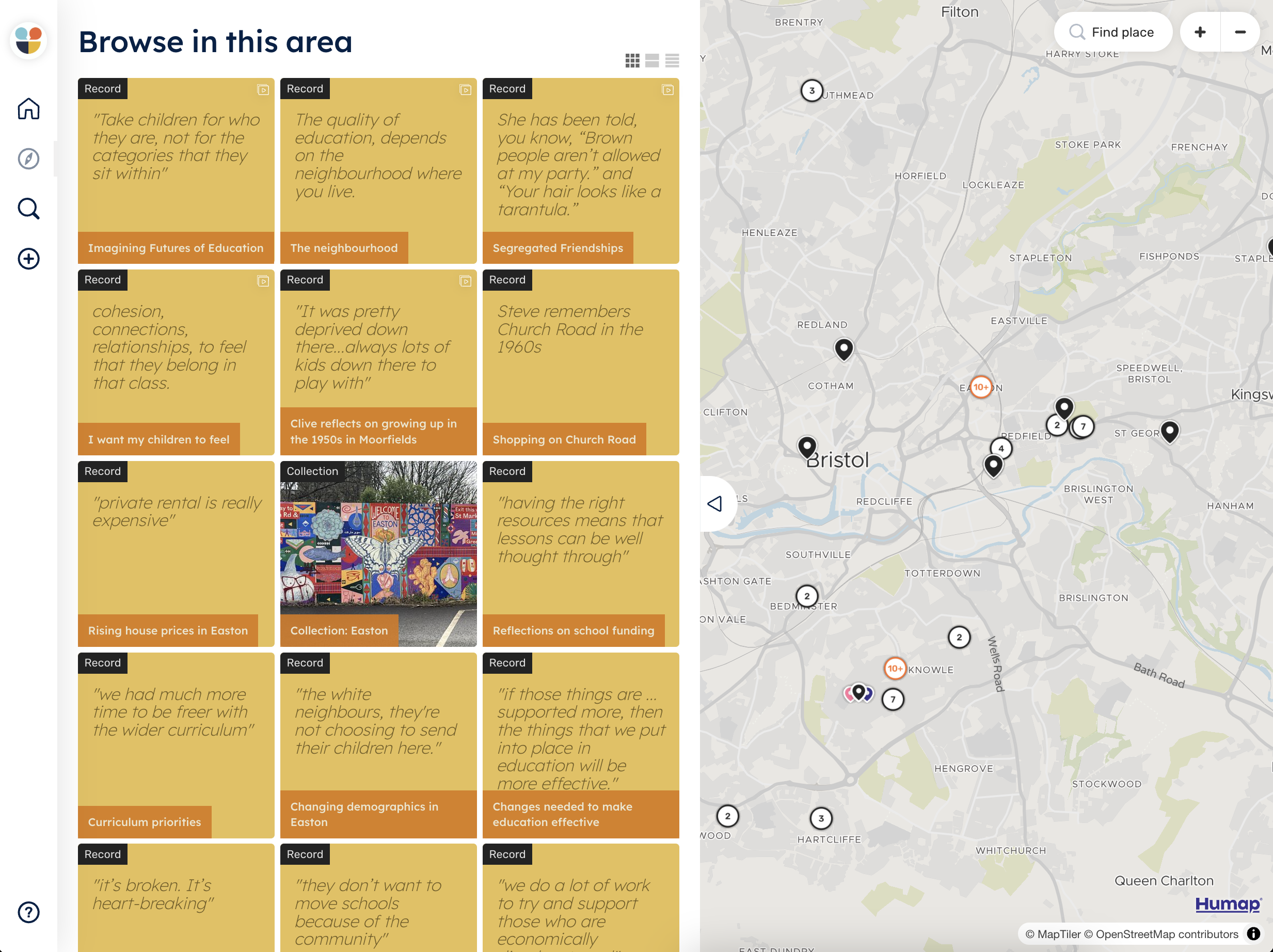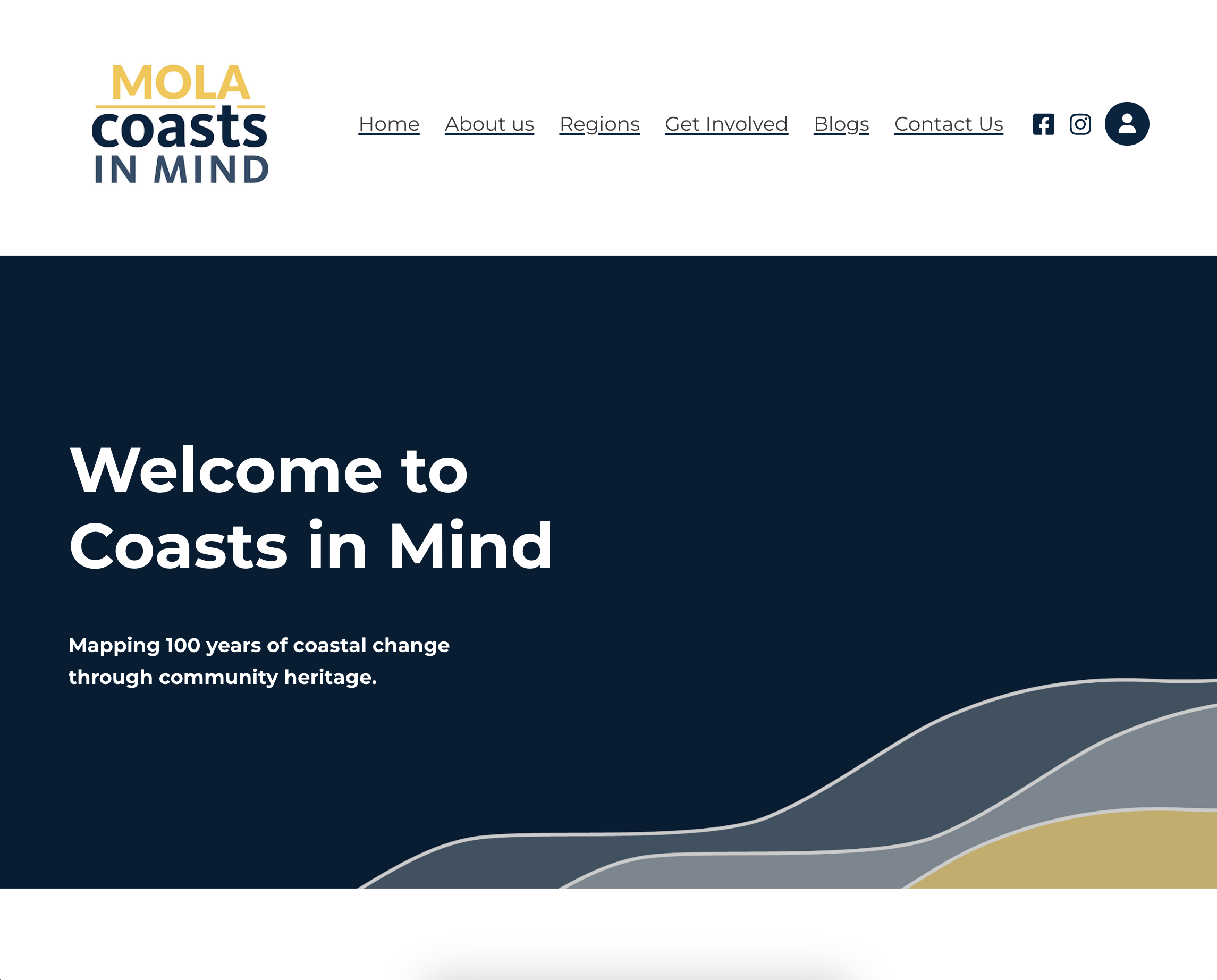Placemaker: the map-drawing tool
Placemaker is a simple, web-native, no-code citizen science crowdsourcing tool that lets people draw on maps.
It’s the platform of choice for popular archaeology company DigVentures, who are using it to crowdsource archaeological and ecological data. Contributions from hundreds of volunteers will help shape heritage and environmental policy, proof that community mapping can drive real-world impact.
Users can toggle between different layers of geographical data, such as historical maps and LiDAR, and use intuitive drawing tools to create polygons. These can be labelled with metadata, exported, and repurposed across projects.
Best of all, data created in Placemaker can be seamlessly imported into Humap, linking public participation with long-term storytelling and research.







